- Home Sea trials Dehler 34 offers plenty of space to more around
Dehler 34 offers plenty of space to more around
Dehler’s new Simonis and Voogd-designed Dehler 34 reflects a strategic decision by the company to increase the performance of its boats across the entire range. This boat replaces the previous 34 model, which was an in-house design dating from 2001. The Dehler 34’s cockpit sports a big (140cm) wheel, which helps to provide an excellent helming position — there’s plenty of space to move around behind it, even with a tactician there, and a good view of the headsail luff when sitting to windward with feet securely braced on the pedestal. The CR version has optional removable transom storage boxes, but as there’s already a huge cockpit locker, further stowage space aft under the cockpit and under-cockpit liferaft stowage near the companionway, anyone who’s even vaguely serious about racing won’t need or want the extra weight aft. Teak bonded onto the cockpit seats and floor looks attractive and provides a good non-slip footing, without incurring the weight penalty or maintenance of a full teak deck. The deck surfaces elsewhere have a very effective moulded-in nonslip pattern, side decks are relatively wide, and by cruiser-racer standards the foredeck is reasonably good.However, there’s no disguising the large coachroof, but all hatches are flush-mounted, which gives a smooth profile. A moulded toerail runs the entire length of the boat. It’s contoured to allow comfortable hiking, and does provide additional security for those working aft of the mast. The six folding mooring cleats are another sign of the design’s dual purpose roles, but Dehler is happy to omit the midships cleats (which would make hiking more comfortable), or even to replace the fore and aft items with padeyes. Deck gear is all top quality and, as mentioned earlier, a considerable amount of thought has gone into it. Our test boat had just three small optional extras — a cunningham, jib sheet inhaulers and a carbon (rather than aluminium) pole.
Under sail
Our test boat was equipped with North 3DL sails, with the main running on luff slides. The standard Selden boom has two single-line slab reefs, plus a conventional pennant for the third reef. The sails set predictably well and the rig proved to be tweaky and responsive. Our test took place in a wind varying from 7-14 knots true, sailing with five crew and the Code 2 headsail. The 34RS proved to be light and responsive on the helm at all times, with just a touch of weather helm when close-hauled in the lighter airs, building to a maximum of less than a quarter of a turn in the stronger puffs. The powerful backstay requires lots of rope to be pulled through, but it makes a big difference, with speed building noticeably as it’s hardened on. At the lower end of the wind range we made around six knots close-hauled, a figure that climbed to a maximum of 7.2 as the wind increased. In the flat water of the Solent there was not enough wind to get us surfing under spinnaker, but we managed a very unruffled 8.1 knots. Even when reaching with a big spinnaker control always remained positive in the gusts, with the boat responding immediately to the helm. Overall, the Dehler 34 feels like a boat with legs and predictable, well mannered handling that would be a good choice for offshore work.
Interior
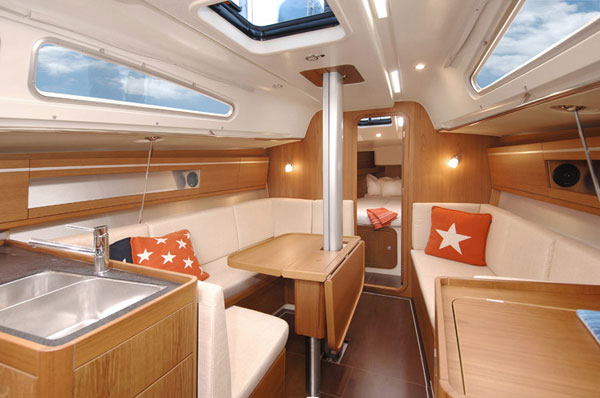
The fully fitted interior of both models are identical, with a two cabin plus saloon layout that will make for comfortable cruising, offshore racing and deliveries. The general impression is of the accommodation having plenty of light and ventilation — the large coachroof window is a huge opening port, which will be ideal for hot climates, although perhaps raises some concerns about weather-tight integrity in extreme conditions. The galley is of a good size and well appointed, with twin sinks, large fridge, cooker with two burners and oven, and ample stowage. The main criticism is the lack of any fixed worktop space — the top of the fridge doubles as the only useable space for this purpose and, although the raised fiddles in the galley are well placed in other respects, on port tack there’s nothing to prevent items placed here falling into the sinks. The aft cabin is aft of the galley, it’s also of a good size, with plenty of clearance above the large double berth. However, the only natural light and ventilation in this area is via a small opening port to the cockpit well, making it feel somewhat claustrophobic when the door to the saloon is closed. A well-appointed heads compartment is opposite the quarter cabin. Immediately forward of this there’s a proper large forward-facing chart table with its own seat and ample space for mounting instruments. The saloon has a single settee to starboard, and a large ‘U’-shaped one to port, with a pull-out to create a third double berth in this area. There’s a folding table arranged around the keel-stepped mast, but it can’t easily be removed for packing sails. There’s good provision for stowage under the berths (apart from the port settee, which houses the water tank). The forecabin is a reasonable size, and includes a standing/changing area at the head of the berth. This cabin has a lighter and airier feel than the aft cabin, and so is likely to be first choice of most owners.
The Dehler 34 Review: Verdict
The Dehler 34 is a boat that stands out in an increasingly crowded market for cruiser-racers of this size. It’s a well mannered design and the attention to detail that has gone into improving the deck layout is commendable.
Source: “Yachts & Yachting”
Condividi post su:
We suggest other ships that could be of your interest
-
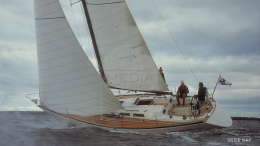
BALTIC 37
-
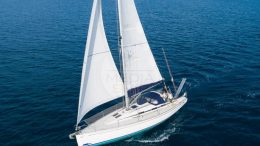
BAVARIA 38 MATCH
-
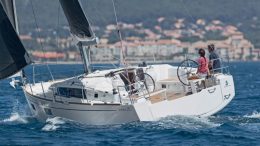
OCEANIS 38.1
-
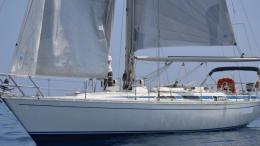
GRAND SOLEIL 39
-
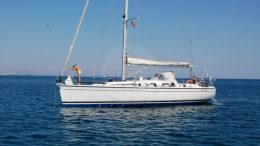
DEHLER 39
-
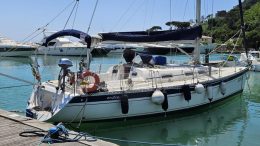
ELAN 40
-
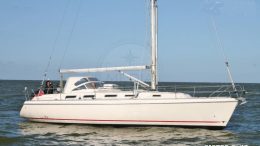
ETAP 39s
-
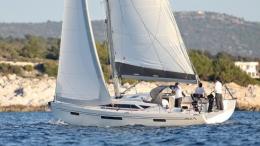
MORE 40
-
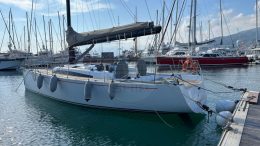
MYLIUS 11E25
-
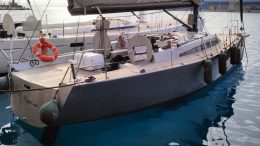
MYLIUS 11E25

FLY

HARD TOP

OPEN

RUBBER DINGHY

CLASSIC OLD

MULTIHULL CATAMARAN

CRUISING

CRUISING/RACER

RACER

CLASSIC OLD

MULTIHULL CATAMARAN
Scegli Prezzo (€)
Min
- 10.000
- 15.000
- 20.000
- 25.000
- 30.000
- 35.000
- 40.000
- 45.000
- 50.000
- 55.000
- 60.000
- 65.000
- 70.000
- 75.000
- 80.000
- 85.000
- 90.000
- 95.000
- 100.000
- 110.000
- 120.000
- 130.000
- 140.000
- 150.000
- 160.000
- 170.000
- 180.000
- 190.000
- 200.000
- 220.000
- 240.000
- 260.000
- 280.000
- 300.000
- 330.000
- 360.000
- 390.000
- 400.000
- 440.000
- 480.000
- 500.000
- 550.000
- 600.000
- 650.000
- 700.000
- 750.000
- 800.000
- 850.000
- 900.000
- 950.000
- 1.000.000
- TUTTO
Max
- 10.000
- 15.000
- 20.000
- 25.000
- 30.000
- 35.000
- 40.000
- 45.000
- 50.000
- 55.000
- 60.000
- 65.000
- 70.000
- 75.000
- 80.000
- 85.000
- 90.000
- 95.000
- 100.000
- 110.000
- 120.000
- 130.000
- 140.000
- 150.000
- 160.000
- 170.000
- 180.000
- 190.000
- 200.000
- 220.000
- 240.000
- 260.000
- 280.000
- 300.000
- 330.000
- 360.000
- 390.000
- 400.000
- 440.000
- 480.000
- 500.000
- 550.000
- 600.000
- 650.000
- 700.000
- 750.000
- 800.000
- 850.000
- 900.000
- 950.000
- 1.000.000
- TUTTO
Scegli Anno
Min
- 2025
- 2018
- 2015
- 2012
- 2009
- 2006
- 2003
- 2000
- 1997
- 1994
- 1991
- 1988
- 1985
- 1982
- 1979
- 1976
- 1973
- 1970
- 1967
- 1964
- 1961
- 1958
- 1955
- 1952
- 1949
- 1946
- 1943
- 1940
- 1937
- 1934
- 1931
- 1928
- 1925
- 1922
- 1919
- 1916
- 1913
- 1910
- 1907
- 1904
- 1901
- 1900
Max
- 2025
- 2018
- 2015
- 2012
- 2009
- 2006
- 2003
- 2000
- 1997
- 1994
- 1991
- 1988
- 1985
- 1982
- 1979
- 1976
- 1973
- 1970
- 1967
- 1964
- 1961
- 1958
- 1955
- 1952
- 1949
- 1946
- 1943
- 1940
- 1937
- 1934
- 1931
- 1928
- 1925
- 1922
- 1919
- 1916
- 1913
- 1910
- 1907
- 1904
- 1901
- 1900
Scegli Lunghezza (mt)
Min
- 6,00
- 6,50
- 7,00
- 7,50
- 8,00
- 8,50
- 9,00
- 9,50
- 10,00
- 10,50
- 11,00
- 11,50
- 12,00
- 12,50
- 13,00
- 13,50
- 14,00
- 14,50
- 15,00
- 15,50
- 16,00
- 16,50
- 17,00
- 17,50
- 18,00
- 18,50
- 19,00
- 19,50
- 20,00
- 20,50
- 21,00
- 21,50
- 22,00
- 22,50
- 23,00
- 23,50
- 24,00
- 24,50
- 25,00
- 25,50
- 26,00
- 26,50
- 27,00
- 27,50
- 28,00
- 28,50
- 29,00
- 29,50
- 30,00
- 30,50
- 31,00
- 31,50
- 32,00
- 32,50
- 33,00
- 33,50
- 34,00
- 34,50
- 35,00
- 35,50
- 36,00
- 36,50
- 37,00
- 37,50
- 38,00
- 38,50
- 39,00
- 39,50
- 40,00
- 40,50
- 41,00
- 41,50
- 42,00
- 42,50
- 43,00
- 43,50
- 44,00
- 44,50
- 45,00
- 45,50
- 46,00
- 46,50
- 47,00
- 47,50
- 48,00
- 48,50
- 49,00
- 49,50
- 50,00
- 50,50
- 51,00
- 51,50
- 52,00
- 52,50
- 53,00
- 53,50
- 54,00
- 54,50
- 55,00
- 55,50
- 56,00
- 56,50
- 57,00
- 57,50
- 58,00
- 58,50
- 59,00
- 59,50
- 60,00
- 60,50
- 61,00
- 61,50
- 62,00
- 62,50
- 63,00
- 63,50
- 64,00
- 64,50
- 65,00
- 65,50
- 66,00
- 66,50
- 67,00
- 67,50
- 68,00
- 68,50
- 69,00
- 69,50
- 70,00
- 70,50
- 71,00
- 71,50
- 72,00
- 72,50
- 73,00
- 73,50
- 74,00
- 74,50
- 75,00
- 75,50
- 76,00
- 76,50
- 77,00
- 77,50
- 78,00
- 78,50
- 79,00
- 79,50
- 80,00
- 80,50
- 81,00
- 81,50
- 82,00
- 82,50
- 83,00
- 83,50
- 84,00
- 84,50
- 85,00
- 85,50
- 86,00
- 86,50
- 87,00
- 87,50
- 88,00
- 88,50
- 89,00
- 89,50
- 90,00
- 90,50
- 91,00
- 91,50
- 92,00
- 92,50
- 93,00
- 93,50
- 94,00
- 94,50
- 95,00
- 95,50
- 96,00
- 96,50
- 97,00
- 97,50
- 98,00
- 98,50
- 99,00
- 99,50
- 100,00
- 100,50
- 101,00
- 101,50
- 102,00
- 102,50
- 103,00
- 103,50
- 104,00
- 104,50
- 105,00
- 105,50
- 106,00
- 106,50
- 107,00
- 107,50
- 108,00
- 108,50
- 109,00
- 109,50
- 110,00
- 110,50
- 111,00
- 111,50
- 112,00
- 112,50
- 113,00
- 113,50
- 114,00
- 114,50
- 115,00
- 115,50
- 116,00
- 116,50
- 117,00
- 117,50
- 118,00
- 118,50
- 119,00
- 119,50
- 120,00
- 120,50
- 121,00
- 121,50
- 122,00
- 122,50
- 123,00
- 123,50
- 124,00
- 124,50
- 125,00
- 125,50
- 126,00
- 126,50
- 127,00
- 127,50
- 128,00
- 128,50
- 129,00
- 129,50
- 130,00
- 130,50
- 131,00
- 131,50
- 132,00
- 132,50
- 133,00
- 133,50
- 134,00
- 134,50
- 135,00
- 135,50
- 136,00
- 136,50
- 137,00
- 137,50
- 138,00
- 138,50
- 139,00
- 139,50
- 140,00
- 140,50
- 141,00
- 141,50
- 142,00
- 142,50
- 143,00
- 143,50
- 144,00
- 144,50
- 145,00
- 145,50
- 146,00
- 146,50
- 147,00
- 147,50
- 148,00
- 148,50
- 149,00
- 149,50
- 150,00
- 150,50
- 151,00
- 151,50
- 152,00
- 152,50
- 153,00
- 153,50
- 154,00
- 154,50
- 155,00
- 155,50
- 156,00
- 156,50
- 157,00
- 157,50
- 158,00
- 158,50
- 159,00
- 159,50
- 160,00
- 160,50
- 161,00
- 161,50
- 162,00
- 162,50
- 163,00
- 163,50
- 164,00
- 164,50
- 165,00
- 165,50
- 166,00
- 166,50
- 167,00
- 167,50
- 168,00
- 168,50
- 169,00
- 169,50
- 170,00
- 170,50
- 171,00
- 171,50
- 172,00
- 172,50
- 173,00
- 173,50
- 174,00
- 174,50
- 175,00
- 175,50
- 176,00
- 176,50
- 177,00
- 177,50
- 178,00
- 178,50
- 179,00
- 179,50
Max
- 6,00
- 6,50
- 7,00
- 7,50
- 8,00
- 8,50
- 9,00
- 9,50
- 10,00
- 10,50
- 11,00
- 11,50
- 12,00
- 12,50
- 13,00
- 13,50
- 14,00
- 14,50
- 15,00
- 15,50
- 16,00
- 16,50
- 17,00
- 17,50
- 18,00
- 18,50
- 19,00
- 19,50
- 20,00
- 20,50
- 21,00
- 21,50
- 22,00
- 22,50
- 23,00
- 23,50
- 24,00
- 24,50
- 25,00
- 25,50
- 26,00
- 26,50
- 27,00
- 27,50
- 28,00
- 28,50
- 29,00
- 29,50
- 30,00
- 30,50
- 31,00
- 31,50
- 32,00
- 32,50
- 33,00
- 33,50
- 34,00
- 34,50
- 35,00
- 35,50
- 36,00
- 36,50
- 37,00
- 37,50
- 38,00
- 38,50
- 39,00
- 39,50
- 40,00
- 40,50
- 41,00
- 41,50
- 42,00
- 42,50
- 43,00
- 43,50
- 44,00
- 44,50
- 45,00
- 45,50
- 46,00
- 46,50
- 47,00
- 47,50
- 48,00
- 48,50
- 49,00
- 49,50
- 50,00
- 50,50
- 51,00
- 51,50
- 52,00
- 52,50
- 53,00
- 53,50
- 54,00
- 54,50
- 55,00
- 55,50
- 56,00
- 56,50
- 57,00
- 57,50
- 58,00
- 58,50
- 59,00
- 59,50
- 60,00
- 60,50
- 61,00
- 61,50
- 62,00
- 62,50
- 63,00
- 63,50
- 64,00
- 64,50
- 65,00
- 65,50
- 66,00
- 66,50
- 67,00
- 67,50
- 68,00
- 68,50
- 69,00
- 69,50
- 70,00
- 70,50
- 71,00
- 71,50
- 72,00
- 72,50
- 73,00
- 73,50
- 74,00
- 74,50
- 75,00
- 75,50
- 76,00
- 76,50
- 77,00
- 77,50
- 78,00
- 78,50
- 79,00
- 79,50
- 80,00
- 80,50
- 81,00
- 81,50
- 82,00
- 82,50
- 83,00
- 83,50
- 84,00
- 84,50
- 85,00
- 85,50
- 86,00
- 86,50
- 87,00
- 87,50
- 88,00
- 88,50
- 89,00
- 89,50
- 90,00
- 90,50
- 91,00
- 91,50
- 92,00
- 92,50
- 93,00
- 93,50
- 94,00
- 94,50
- 95,00
- 95,50
- 96,00
- 96,50
- 97,00
- 97,50
- 98,00
- 98,50
- 99,00
- 99,50
- 100,00
- 100,50
- 101,00
- 101,50
- 102,00
- 102,50
- 103,00
- 103,50
- 104,00
- 104,50
- 105,00
- 105,50
- 106,00
- 106,50
- 107,00
- 107,50
- 108,00
- 108,50
- 109,00
- 109,50
- 110,00
- 110,50
- 111,00
- 111,50
- 112,00
- 112,50
- 113,00
- 113,50
- 114,00
- 114,50
- 115,00
- 115,50
- 116,00
- 116,50
- 117,00
- 117,50
- 118,00
- 118,50
- 119,00
- 119,50
- 120,00
- 120,50
- 121,00
- 121,50
- 122,00
- 122,50
- 123,00
- 123,50
- 124,00
- 124,50
- 125,00
- 125,50
- 126,00
- 126,50
- 127,00
- 127,50
- 128,00
- 128,50
- 129,00
- 129,50
- 130,00
- 130,50
- 131,00
- 131,50
- 132,00
- 132,50
- 133,00
- 133,50
- 134,00
- 134,50
- 135,00
- 135,50
- 136,00
- 136,50
- 137,00
- 137,50
- 138,00
- 138,50
- 139,00
- 139,50
- 140,00
- 140,50
- 141,00
- 141,50
- 142,00
- 142,50
- 143,00
- 143,50
- 144,00
- 144,50
- 145,00
- 145,50
- 146,00
- 146,50
- 147,00
- 147,50
- 148,00
- 148,50
- 149,00
- 149,50
- 150,00
- 150,50
- 151,00
- 151,50
- 152,00
- 152,50
- 153,00
- 153,50
- 154,00
- 154,50
- 155,00
- 155,50
- 156,00
- 156,50
- 157,00
- 157,50
- 158,00
- 158,50
- 159,00
- 159,50
- 160,00
- 160,50
- 161,00
- 161,50
- 162,00
- 162,50
- 163,00
- 163,50
- 164,00
- 164,50
- 165,00
- 165,50
- 166,00
- 166,50
- 167,00
- 167,50
- 168,00
- 168,50
- 169,00
- 169,50
- 170,00
- 170,50
- 171,00
- 171,50
- 172,00
- 172,50
- 173,00
- 173,50
- 174,00
- 174,50
- 175,00
- 175,50
- 176,00
- 176,50
- 177,00
- 177,50
- 178,00
- 178,50
- 179,00
- 179,50
Scegli Larghezza (mt)
Min
- 2,00
- 2,10
- 2,20
- 2,30
- 2,40
- 2,50
- 2,60
- 2,70
- 2,80
- 2,90
- 3,00
- 3,10
- 3,20
- 3,30
- 3,40
- 3,50
- 3,60
- 3,70
- 3,80
- 3,90
- 4,00
- 4,10
- 4,20
- 4,30
- 4,40
- 4,50
- 4,60
- 4,70
- 4,80
- 4,90
- 5,00
- 5,10
- 5,20
- 5,30
- 5,40
- 5,50
- 5,60
- 5,70
- 5,80
- 5,90
- 6,00
- 6,10
- 6,20
- 6,30
- 6,40
- 6,50
- 6,60
- 6,70
- 6,80
- 6,90
- 7,00
- 7,10
- 7,20
- 7,30
- 7,40
- 7,50
- 7,60
- 7,70
- 7,80
- 7,90
- 8,00
- 8,10
- 8,20
- 8,30
- 8,40
- 8,50
- 8,60
- 8,70
- 8,80
- 8,90
- 9,00
- 9,10
- 9,20
- 9,30
- 9,40
- 9,50
- 9,60
- 9,70
- 9,80
- 9,90
- 10,00
- 10,10
- 10,20
- 10,30
- 10,40
- 10,50
- 10,60
- 10,70
- 10,80
- 10,90
- 11,00
- 11,10
- 11,20
- 11,30
- 11,40
- 11,50
- 11,60
- 11,70
- 11,80
- 11,90
- 12,00
- 12,10
- 12,20
- 12,30
- 12,40
- 12,50
- 12,60
- 12,70
- 12,80
- 12,90
- 13,00
- 13,10
- 13,20
- 13,30
- 13,40
- 13,50
- 13,60
- 13,70
- 13,80
- 13,90
- 14,00
- 14,10
- 14,20
- 14,30
- 14,40
- 14,50
- 14,60
- 14,70
- 14,80
- 14,90
- 15,00
Max
- 2,00
- 2,10
- 2,20
- 2,30
- 2,40
- 2,50
- 2,60
- 2,70
- 2,80
- 2,90
- 3,00
- 3,10
- 3,20
- 3,30
- 3,40
- 3,50
- 3,60
- 3,70
- 3,80
- 3,90
- 4,00
- 4,10
- 4,20
- 4,30
- 4,40
- 4,50
- 4,60
- 4,70
- 4,80
- 4,90
- 5,00
- 5,10
- 5,20
- 5,30
- 5,40
- 5,50
- 5,60
- 5,70
- 5,80
- 5,90
- 6,00
- 6,10
- 6,20
- 6,30
- 6,40
- 6,50
- 6,60
- 6,70
- 6,80
- 6,90
- 7,00
- 7,10
- 7,20
- 7,30
- 7,40
- 7,50
- 7,60
- 7,70
- 7,80
- 7,90
- 8,00
- 8,10
- 8,20
- 8,30
- 8,40
- 8,50
- 8,60
- 8,70
- 8,80
- 8,90
- 9,00
- 9,10
- 9,20
- 9,30
- 9,40
- 9,50
- 9,60
- 9,70
- 9,80
- 9,90
- 10,00
- 10,10
- 10,20
- 10,30
- 10,40
- 10,50
- 10,60
- 10,70
- 10,80
- 10,90
- 11,00
- 11,10
- 11,20
- 11,30
- 11,40
- 11,50
- 11,60
- 11,70
- 11,80
- 11,90
- 12,00
- 12,10
- 12,20
- 12,30
- 12,40
- 12,50
- 12,60
- 12,70
- 12,80
- 12,90
- 13,00
- 13,10
- 13,20
- 13,30
- 13,40
- 13,50
- 13,60
- 13,70
- 13,80
- 13,90
- 14,00
- 14,10
- 14,20
- 14,30
- 14,40
- 14,50
- 14,60
- 14,70
- 14,80
- 14,90
- 15,00
Scegli Immersione (mt)
Min
- 0,00
- 0,10
- 0,20
- 0,30
- 0,40
- 0,50
- 0,60
- 0,70
- 0,80
- 0,90
- 1,00
- 1,10
- 1,20
- 1,30
- 1,40
- 1,50
- 1,60
- 1,70
- 1,80
- 1,90
- 2,00
- 2,10
- 2,20
- 2,30
- 2,40
- 2,50
- 2,60
- 2,70
- 2,80
- 2,90
- 3,00
- 3,10
- 3,20
- 3,30
- 3,40
- 3,50
- 3,60
- 3,70
- 3,80
- 3,90
- 4,00
- 4,10
- 4,20
- 4,30
- 4,40
- 4,50
- 4,60
- 4,70
- 4,80
- 4,90
- 5,00
- 5,10
- 5,20
- 5,30
- 5,40
- 5,50
- 5,60
- 5,70
- 5,80
- 5,90
- 6,00
- 6,10
- 6,20
- 6,30
- 6,40
- 6,50
- 6,60
- 6,70
- 6,80
- 6,90
- 7,00
- 7,10
- 7,20
- 7,30
- 7,40
- 7,50
- 7,60
- 7,70
- 7,80
- 7,90
- 8,00
- 8,10
- 8,20
- 8,30
- 8,40
- 8,50
- 8,60
- 8,70
- 8,80
- 8,90
- 9,00
- 9,10
- 9,20
- 9,30
- 9,40
- 9,50
- 9,60
- 9,70
- 9,80
- 9,90
- 10,00
- 10,10
- 10,20
- 10,30
- 10,40
- 10,50
- 10,60
- 10,70
- 10,80
- 10,90
- 11,00
- 11,10
- 11,20
- 11,30
- 11,40
- 11,50
- 11,60
- 11,70
- 11,80
- 11,90
- 12,00
- 12,10
- 12,20
- 12,30
- 12,40
- 12,50
- 12,60
- 12,70
- 12,80
- 12,90
- 13,00
- 13,10
- 13,20
- 13,30
- 13,40
- 13,50
- 13,60
- 13,70
- 13,80
- 13,90
- 14,00
- 14,10
- 14,20
- 14,30
- 14,40
- 14,50
- 14,60
- 14,70
- 14,80
- 14,90
- 15,00
- 15,10
- 15,20
- 15,30
- 15,40
- 15,50
- 15,60
- 15,70
- 15,80
- 15,90
- 16,00
- 16,10
- 16,20
- 16,30
- 16,40
- 16,50
- 16,60
- 16,70
- 16,80
- 16,90
- 17,00
- 17,10
- 17,20
- 17,30
- 17,40
- 17,50
- 17,60
- 17,70
- 17,80
- 17,90
- 18,00
- 18,10
- 18,20
- 18,30
- 18,40
- 18,50
- 18,60
- 18,70
- 18,80
- 18,90
- 19,00
- 19,10
- 19,20
- 19,30
- 19,40
- 19,50
- 19,60
- 19,70
- 19,80
- 19,90
- 20,00
- 20,10
- 20,20
- 20,30
- 20,40
- 20,50
- 20,60
- 20,70
- 20,80
- 20,90
- 21,00
- 21,10
- 21,20
- 21,30
- 21,40
- 21,50
- 21,60
- 21,70
- 21,80
- 21,90
- 22,00
- 22,10
- 22,20
- 22,30
- 22,40
- 22,50
- 22,60
- 22,70
- 22,80
- 22,90
- 23,00
- 23,10
- 23,20
- 23,30
- 23,40
- 23,50
- 23,60
- 23,70
- 23,80
- 23,90
- 24,00
- 24,10
- 24,20
- 24,30
- 24,40
- 24,50
- 24,60
- 24,70
- 24,80
- 24,90
- 25,00
- 25,10
- 25,20
- 25,30
- 25,40
- 25,50
- 25,60
- 25,70
- 25,80
- 25,90
- 26,00
- 26,10
- 26,20
- 26,30
- 26,40
- 26,50
- 26,60
- 26,70
- 26,80
- 26,90
- 27,00
- 27,10
- 27,20
- 27,30
- 27,40
- 27,50
- 27,60
- 27,70
- 27,80
- 27,90
- 28,00
- 28,10
- 28,20
- 28,30
- 28,40
- 28,50
- 28,60
- 28,70
- 28,80
- 28,90
- 29,00
- 29,10
- 29,20
- 29,30
- 29,40
- 29,50
- 29,60
- 29,70
- 29,80
- 29,90
- 30,00
- 30,10
- 30,20
- 30,30
- 30,40
- 30,50
- 30,60
- 30,70
- 30,80
- 30,90
- 31,00
- 31,10
- 31,20
- 31,30
- 31,40
- 31,50
- 31,60
- 31,70
- 31,80
- 31,90
- 32,00
- 32,10
- 32,20
- 32,30
- 32,40
- 32,50
- 32,60
- 32,70
- 32,80
- 32,90
- 33,00
- 33,10
- 33,20
- 33,30
- 33,40
- 33,50
- 33,60
- 33,70
- 33,80
- 33,90
- 34,00
- 34,10
- 34,20
- 34,30
- 34,40
- 34,50
- 34,60
- 34,70
- 34,80
- 34,90
- 35,00
- 35,10
- 35,20
- 35,30
- 35,40
- 35,50
- 35,60
- 35,70
- 35,80
- 35,90
- 36,00
- 36,10
- 36,20
- 36,30
- 36,40
- 36,50
- 36,60
- 36,70
- 36,80
- 36,90
- 37,00
- 37,10
- 37,20
- 37,30
- 37,40
- 37,50
- 37,60
- 37,70
- 37,80
- 37,90
- 38,00
- 38,10
- 38,20
- 38,30
- 38,40
- 38,50
- 38,60
- 38,70
- 38,80
- 38,90
- 39,00
- 39,10
- 39,20
- 39,30
- 39,40
- 39,50
- 39,60
- 39,70
- 39,80
- 39,90
- 40,00
- 40,10
- 40,20
- 40,30
- 40,40
- 40,50
- 40,60
- 40,70
- 40,80
- 40,90
- 41,00
- 41,10
- 41,20
- 41,30
- 41,40
- 41,50
- 41,60
- 41,70
- 41,80
- 41,90
- 42,00
- 42,10
- 42,20
- 42,30
- 42,40
- 42,50
- 42,60
- 42,70
- 42,80
- 42,90
- 43,00
- 43,10
- 43,20
- 43,30
- 43,40
- 43,50
- 43,60
- 43,70
- 43,80
- 43,90
- 44,00
- 44,10
- 44,20
- 44,30
- 44,40
- 44,50
- 44,60
- 44,70
- 44,80
- 44,90
- 45,00
- 45,10
- 45,20
- 45,30
- 45,40
- 45,50
- 45,60
- 45,70
- 45,80
- 45,90
- 46,00
- 46,10
- 46,20
- 46,30
- 46,40
- 46,50
- 46,60
- 46,70
- 46,80
- 46,90
- 47,00
- 47,10
- 47,20
- 47,30
- 47,40
- 47,50
- 47,60
- 47,70
- 47,80
- 47,90
- 48,00
- 48,10
- 48,20
- 48,30
- 48,40
- 48,50
- 48,60
- 48,70
- 48,80
- 48,90
- 49,00
- 49,10
- 49,20
- 49,30
- 49,40
- 49,50
- 49,60
- 49,70
- 49,80
- 49,90
- 50,00
- 50,10
- 50,20
- 50,30
- 50,40
- 50,50
- 50,60
- 50,70
- 50,80
- 50,90
- 51,00
- 51,10
- 51,20
- 51,30
- 51,40
- 51,50
- 51,60
- 51,70
- 51,80
- 51,90
- 52,00
- 52,10
- 52,20
- 52,30
- 52,40
- 52,50
- 52,60
- 52,70
- 52,80
- 52,90
- 53,00
- 53,10
- 53,20
- 53,30
- 53,40
- 53,50
- 53,60
- 53,70
- 53,80
- 53,90
- 54,00
- 54,10
- 54,20
- 54,30
- 54,40
- 54,50
- 54,60
- 54,70
- 54,80
- 54,90
- 55,00
- 55,10
- 55,20
- 55,30
- 55,40
- 55,50
- 55,60
- 55,70
- 55,80
- 55,90
- 56,00
- 56,10
- 56,20
- 56,30
- 56,40
- 56,50
- 56,60
- 56,70
- 56,80
- 56,90
- 57,00
- 57,10
- 57,20
- 57,30
- 57,40
- 57,50
- 57,60
- 57,70
- 57,80
- 57,90
- 58,00
- 58,10
- 58,20
- 58,30
- 58,40
- 58,50
- 58,60
- 58,70
- 58,80
- 58,90
- 59,00
- 59,10
- 59,20
- 59,30
- 59,40
- 59,50
- 59,60
- 59,70
- 59,80
- 59,90
- 60,00
- 60,10
- 60,20
- 60,30
- 60,40
- 60,50
- 60,60
- 60,70
- 60,80
- 60,90
- 61,00
- 61,10
- 61,20
- 61,30
- 61,40
- 61,50
- 61,60
- 61,70
- 61,80
- 61,90
- 62,00
- 62,10
- 62,20
- 62,30
- 62,40
- 62,50
- 62,60
- 62,70
- 62,80
- 62,90
- 63,00
- 63,10
- 63,20
- 63,30
- 63,40
- 63,50
- 63,60
- 63,70
- 63,80
- 63,90
- 64,00
- 64,10
- 64,20
- 64,30
- 64,40
- 64,50
- 64,60
- 64,70
- 64,80
- 64,90
- 65,00
- 65,10
- 65,20
- 65,30
- 65,40
- 65,50
- 65,60
- 65,70
- 65,80
- 65,90
- 66,00
- 66,10
- 66,20
- 66,30
- 66,40
- 66,50
- 66,60
- 66,70
- 66,80
- 66,90
- 67,00
- 67,10
- 67,20
- 67,30
- 67,40
- 67,50
- 67,60
- 67,70
- 67,80
- 67,90
- 68,00
- 68,10
- 68,20
- 68,30
- 68,40
- 68,50
- 68,60
- 68,70
- 68,80
- 68,90
- 69,00
- 69,10
- 69,20
- 69,30
- 69,40
- 69,50
- 69,60
- 69,70
- 69,80
- 69,90
- 70,00
- 70,10
- 70,20
- 70,30
- 70,40
- 70,50
- 70,60
- 70,70
- 70,80
- 70,90
- 71,00
- 71,10
- 71,20
- 71,30
- 71,40
- 71,50
- 71,60
- 71,70
- 71,80
- 71,90
- 72,00
- 72,10
- 72,20
- 72,30
- 72,40
- 72,50
- 72,60
- 72,70
- 72,80
- 72,90
- 73,00
- 73,10
- 73,20
- 73,30
- 73,40
- 73,50
- 73,60
- 73,70
- 73,80
- 73,90
- 74,00
- 74,10
- 74,20
- 74,30
- 74,40
- 74,50
- 74,60
- 74,70
- 74,80
- 74,90
- 75,00
- 75,10
- 75,20
- 75,30
- 75,40
- 75,50
- 75,60
- 75,70
- 75,80
- 75,90
- 76,00
- 76,10
- 76,20
- 76,30
- 76,40
- 76,50
- 76,60
- 76,70
- 76,80
- 76,90
- 77,00
- 77,10
- 77,20
- 77,30
- 77,40
- 77,50
- 77,60
- 77,70
- 77,80
- 77,90
- 78,00
- 78,10
- 78,20
- 78,30
- 78,40
- 78,50
- 78,60
- 78,70
- 78,80
- 78,90
- 79,00
- 79,10
- 79,20
- 79,30
- 79,40
- 79,50
- 79,60
- 79,70
- 79,80
- 79,90
- 80,00
- 80,10
- 80,20
- 80,30
- 80,40
- 80,50
- 80,60
- 80,70
- 80,80
- 80,90
- 81,00
- 81,10
- 81,20
- 81,30
- 81,40
- 81,50
- 81,60
- 81,70
- 81,80
- 81,90
- 82,00
- 82,10
- 82,20
- 82,30
- 82,40
- 82,50
- 82,60
- 82,70
- 82,80
- 82,90
- 83,00
- 83,10
- 83,20
- 83,30
- 83,40
- 83,50
- 83,60
- 83,70
- 83,80
- 83,90
- 84,00
- 84,10
- 84,20
- 84,30
- 84,40
- 84,50
- 84,60
- 84,70
- 84,80
- 84,90
- 85,00
- 85,10
- 85,20
- 85,30
- 85,40
- 85,50
- 85,60
- 85,70
- 85,80
- 85,90
- 86,00
- 86,10
- 86,20
- 86,30
- 86,40
- 86,50
- 86,60
- 86,70
- 86,80
- 86,90
- 87,00
- 87,10
- 87,20
- 87,30
- 87,40
- 87,50
- 87,60
- 87,70
- 87,80
- 87,90
- 88,00
- 88,10
- 88,20
- 88,30
- 88,40
- 88,50
- 88,60
- 88,70
- 88,80
- 88,90
- 89,00
- 89,10
- 89,20
- 89,30
- 89,40
- 89,50
- 89,60
- 89,70
- 89,80
- 89,90
- 90,00
- 90,10
- 90,20
- 90,30
- 90,40
- 90,50
- 90,60
- 90,70
- 90,80
- 90,90
- 91,00
- 91,10
- 91,20
- 91,30
- 91,40
- 91,50
- 91,60
- 91,70
- 91,80
- 91,90
- 92,00
- 92,10
- 92,20
- 92,30
- 92,40
- 92,50
- 92,60
- 92,70
- 92,80
- 92,90
- 93,00
- 93,10
- 93,20
- 93,30
- 93,40
- 93,50
- 93,60
- 93,70
- 93,80
- 93,90
- 94,00
- 94,10
- 94,20
- 94,30
- 94,40
- 94,50
- 94,60
- 94,70
- 94,80
- 94,90
- 95,00
- 95,10
- 95,20
- 95,30
- 95,40
- 95,50
- 95,60
- 95,70
- 95,80
- 95,90
- 96,00
- 96,10
- 96,20
- 96,30
- 96,40
- 96,50
- 96,60
- 96,70
- 96,80
- 96,90
- 97,00
- 97,10
- 97,20
- 97,30
- 97,40
- 97,50
- 97,60
- 97,70
- 97,80
- 97,90
- 98,00
- 98,10
- 98,20
- 98,30
- 98,40
- 98,50
- 98,60
- 98,70
- 98,80
- 98,90
- 99,00
- 99,10
- 99,20
- 99,30
- 99,40
- 99,50
- 99,60
- 99,70
- 99,80
- 99,90
- 100,00
- 100,10
- 100,20
- 100,30
- 100,40
- 100,50
- 100,60
- 100,70
- 100,80
- 100,90
- 101,00
- 101,10
- 101,20
- 101,30
- 101,40
- 101,50
- 101,60
- 101,70
- 101,80
- 101,90
- 102,00
- 102,10
- 102,20
- 102,30
- 102,40
- 102,50
- 102,60
- 102,70
- 102,80
- 102,90
- 103,00
- 103,10
- 103,20
- 103,30
- 103,40
- 103,50
- 103,60
- 103,70
- 103,80
- 103,90
- 104,00
- 104,10
- 104,20
- 104,30
- 104,40
- 104,50
- 104,60
- 104,70
- 104,80
- 104,90
- 105,00
- 105,10
- 105,20
- 105,30
- 105,40
- 105,50
- 105,60
- 105,70
- 105,80
- 105,90
- 106,00
- 106,10
- 106,20
- 106,30
- 106,40
- 106,50
- 106,60
- 106,70
- 106,80
- 106,90
- 107,00
- 107,10
- 107,20
- 107,30
- 107,40
- 107,50
- 107,60
- 107,70
- 107,80
- 107,90
- 108,00
- 108,10
- 108,20
- 108,30
- 108,40
- 108,50
- 108,60
- 108,70
- 108,80
- 108,90
- 109,00
- 109,10
- 109,20
- 109,30
- 109,40
- 109,50
- 109,60
- 109,70
- 109,80
- 109,90
- 110,00
- 110,10
- 110,20
- 110,30
- 110,40
- 110,50
- 110,60
- 110,70
- 110,80
- 110,90
- 111,00
- 111,10
- 111,20
- 111,30
- 111,40
- 111,50
- 111,60
- 111,70
- 111,80
- 111,90
- 112,00
- 112,10
- 112,20
- 112,30
- 112,40
- 112,50
- 112,60
- 112,70
- 112,80
- 112,90
- 113,00
- 113,10
- 113,20
- 113,30
- 113,40
- 113,50
- 113,60
- 113,70
- 113,80
- 113,90
- 114,00
- 114,10
- 114,20
- 114,30
- 114,40
- 114,50
- 114,60
- 114,70
- 114,80
- 114,90
- 115,00
- 115,10
- 115,20
- 115,30
- 115,40
- 115,50
- 115,60
- 115,70
- 115,80
- 115,90
- 116,00
- 116,10
- 116,20
- 116,30
- 116,40
- 116,50
- 116,60
- 116,70
- 116,80
- 116,90
- 117,00
- 117,10
- 117,20
- 117,30
- 117,40
- 117,50
- 117,60
- 117,70
- 117,80
- 117,90
- 118,00
- 118,10
- 118,20
- 118,30
- 118,40
- 118,50
- 118,60
- 118,70
- 118,80
- 118,90
- 119,00
- 119,10
- 119,20
- 119,30
- 119,40
- 119,50
- 119,60
- 119,70
- 119,80
- 119,90
- 120,00
- 120,10
- 120,20
- 120,30
- 120,40
- 120,50
- 120,60
- 120,70
- 120,80
- 120,90
- 121,00
- 121,10
- 121,20
- 121,30
- 121,40
- 121,50
- 121,60
- 121,70
- 121,80
- 121,90
- 122,00
- 122,10
- 122,20
- 122,30
- 122,40
- 122,50
- 122,60
- 122,70
- 122,80
- 122,90
- 123,00
- 123,10
- 123,20
- 123,30
- 123,40
- 123,50
- 123,60
- 123,70
- 123,80
- 123,90
- 124,00
- 124,10
- 124,20
- 124,30
- 124,40
- 124,50
- 124,60
- 124,70
- 124,80
- 124,90
- 125,00
- 125,10
- 125,20
- 125,30
- 125,40
- 125,50
- 125,60
- 125,70
- 125,80
- 125,90
- 126,00
- 126,10
- 126,20
- 126,30
- 126,40
- 126,50
- 126,60
- 126,70
- 126,80
- 126,90
- 127,00
- 127,10
- 127,20
- 127,30
- 127,40
- 127,50
- 127,60
- 127,70
- 127,80
- 127,90
- 128,00
- 128,10
- 128,20
- 128,30
- 128,40
- 128,50
- 128,60
- 128,70
- 128,80
- 128,90
- 129,00
- 129,10
- 129,20
- 129,30
- 129,40
- 129,50
- 129,60
- 129,70
- 129,80
- 129,90
- 130,00
- 130,10
- 130,20
- 130,30
- 130,40
- 130,50
- 130,60
- 130,70
- 130,80
- 130,90
- 131,00
- 131,10
- 131,20
- 131,30
- 131,40
- 131,50
- 131,60
- 131,70
- 131,80
- 131,90
- 132,00
- 132,10
- 132,20
- 132,30
- 132,40
- 132,50
- 132,60
- 132,70
- 132,80
- 132,90
- 133,00
- 133,10
- 133,20
- 133,30
- 133,40
- 133,50
- 133,60
- 133,70
- 133,80
- 133,90
- 134,00
- 134,10
- 134,20
- 134,30
- 134,40
- 134,50
- 134,60
- 134,70
- 134,80
- 134,90
- 135,00
- 135,10
- 135,20
- 135,30
- 135,40
- 135,50
- 135,60
- 135,70
- 135,80
- 135,90
- 136,00
- 136,10
- 136,20
- 136,30
- 136,40
- 136,50
- 136,60
- 136,70
- 136,80
- 136,90
- 137,00
- 137,10
- 137,20
- 137,30
- 137,40
- 137,50
- 137,60
- 137,70
- 137,80
- 137,90
- 138,00
- 138,10
- 138,20
- 138,30
- 138,40
- 138,50
- 138,60
- 138,70
- 138,80
- 138,90
- 139,00
- 139,10
- 139,20
- 139,30
- 139,40
- 139,50
- 139,60
- 139,70
- 139,80
- 139,90
- 140,00
- 140,10
- 140,20
- 140,30
- 140,40
- 140,50
- 140,60
- 140,70
- 140,80
- 140,90
- 141,00
- 141,10
- 141,20
- 141,30
- 141,40
- 141,50
- 141,60
- 141,70
- 141,80
- 141,90
- 142,00
- 142,10
- 142,20
- 142,30
- 142,40
- 142,50
- 142,60
- 142,70
- 142,80
- 142,90
- 143,00
- 143,10
- 143,20
- 143,30
- 143,40
- 143,50
- 143,60
- 143,70
- 143,80
- 143,90
- 144,00
- 144,10
- 144,20
- 144,30
- 144,40
- 144,50
- 144,60
- 144,70
- 144,80
- 144,90
- 145,00
- 145,10
- 145,20
- 145,30
- 145,40
- 145,50
- 145,60
- 145,70
- 145,80
- 145,90
- 146,00
- 146,10
- 146,20
- 146,30
- 146,40
- 146,50
- 146,60
- 146,70
- 146,80
- 146,90
- 147,00
- 147,10
- 147,20
- 147,30
- 147,40
- 147,50
- 147,60
- 147,70
- 147,80
- 147,90
- 148,00
- 148,10
- 148,20
- 148,30
- 148,40
- 148,50
- 148,60
- 148,70
- 148,80
- 148,90
- 149,00
- 149,10
- 149,20
- 149,30
- 149,40
- 149,50
- 149,60
- 149,70
- 149,80
- 149,90
- 150,00
- 150,10
- 150,20
- 150,30
- 150,40
- 150,50
- 150,60
- 150,70
- 150,80
- 150,90
- 151,00
- 151,10
- 151,20
- 151,30
- 151,40
- 151,50
- 151,60
- 151,70
- 151,80
- 151,90
- 152,00
- 152,10
- 152,20
- 152,30
- 152,40
- 152,50
- 152,60
- 152,70
- 152,80
- 152,90
- 153,00
- 153,10
- 153,20
- 153,30
- 153,40
- 153,50
- 153,60
- 153,70
- 153,80
- 153,90
- 154,00
- 154,10
- 154,20
- 154,30
- 154,40
- 154,50
- 154,60
- 154,70
- 154,80
- 154,90
- 155,00
- 155,10
- 155,20
- 155,30
- 155,40
- 155,50
- 155,60
- 155,70
- 155,80
- 155,90
- 156,00
- 156,10
- 156,20
- 156,30
- 156,40
- 156,50
- 156,60
- 156,70
- 156,80
- 156,90
- 157,00
- 157,10
- 157,20
- 157,30
- 157,40
- 157,50
- 157,60
- 157,70
- 157,80
- 157,90
- 158,00
- 158,10
- 158,20
- 158,30
- 158,40
- 158,50
- 158,60
- 158,70
- 158,80
- 158,90
- 159,00
- 159,10
- 159,20
- 159,30
- 159,40
- 159,50
- 159,60
- 159,70
- 159,80
- 159,90
- 160,00
- 160,10
- 160,20
- 160,30
- 160,40
- 160,50
- 160,60
- 160,70
- 160,80
- 160,90
- 161,00
- 161,10
- 161,20
- 161,30
- 161,40
- 161,50
- 161,60
- 161,70
- 161,80
- 161,90
- 162,00
- 162,10
- 162,20
- 162,30
- 162,40
- 162,50
- 162,60
- 162,70
- 162,80
- 162,90
- 163,00
- 163,10
- 163,20
- 163,30
- 163,40
- 163,50
- 163,60
- 163,70
- 163,80
- 163,90
- 164,00
- 164,10
- 164,20
- 164,30
- 164,40
- 164,50
- 164,60
- 164,70
- 164,80
- 164,90
- 165,00
- 165,10
- 165,20
- 165,30
- 165,40
- 165,50
- 165,60
- 165,70
- 165,80
- 165,90
- 166,00
- 166,10
- 166,20
- 166,30
- 166,40
- 166,50
- 166,60
- 166,70
- 166,80
- 166,90
- 167,00
- 167,10
- 167,20
- 167,30
- 167,40
- 167,50
- 167,60
- 167,70
- 167,80
- 167,90
- 168,00
- 168,10
- 168,20
- 168,30
- 168,40
- 168,50
- 168,60
- 168,70
- 168,80
- 168,90
- 169,00
- 169,10
- 169,20
- 169,30
- 169,40
- 169,50
- 169,60
- 169,70
- 169,80
- 169,90
- 170,00
- 170,10
- 170,20
- 170,30
- 170,40
- 170,50
- 170,60
- 170,70
- 170,80
- 170,90
- 171,00
- 171,10
- 171,20
- 171,30
- 171,40
- 171,50
- 171,60
- 171,70
- 171,80
- 171,90
- 172,00
- 172,10
- 172,20
- 172,30
- 172,40
- 172,50
- 172,60
- 172,70
- 172,80
- 172,90
- 173,00
- 173,10
- 173,20
- 173,30
- 173,40
- 173,50
- 173,60
- 173,70
- 173,80
- 173,90
- 174,00
- 174,10
- 174,20
- 174,30
- 174,40
- 174,50
- 174,60
- 174,70
- 174,80
- 174,90
- 175,00
- 175,10
- 175,20
- 175,30
- 175,40
- 175,50
- 175,60
- 175,70
- 175,80
- 175,90
- 176,00
- 176,10
- 176,20
- 176,30
- 176,40
- 176,50
- 176,60
- 176,70
- 176,80
- 176,90
- 177,00
- 177,10
- 177,20
- 177,30
- 177,40
- 177,50
- 177,60
- 177,70
- 177,80
- 177,90
- 178,00
- 178,10
- 178,20
- 178,30
- 178,40
- 178,50
- 178,60
- 178,70
- 178,80
- 178,90
- 179,00
- 179,10
- 179,20
- 179,30
- 179,40
- 179,50
- 179,60
- 179,70
- 179,80
- 179,90
- 180,00
Max
- 0,00
- 0,10
- 0,20
- 0,30
- 0,40
- 0,50
- 0,60
- 0,70
- 0,80
- 0,90
- 1,00
- 1,10
- 1,20
- 1,30
- 1,40
- 1,50
- 1,60
- 1,70
- 1,80
- 1,90
- 2,00
- 2,10
- 2,20
- 2,30
- 2,40
- 2,50
- 2,60
- 2,70
- 2,80
- 2,90
- 3,00
- 3,10
- 3,20
- 3,30
- 3,40
- 3,50
- 3,60
- 3,70
- 3,80
- 3,90
- 4,00
- 4,10
- 4,20
- 4,30
- 4,40
- 4,50
- 4,60
- 4,70
- 4,80
- 4,90
- 5,00
- 5,10
- 5,20
- 5,30
- 5,40
- 5,50
- 5,60
- 5,70
- 5,80
- 5,90
- 6,00
- 6,10
- 6,20
- 6,30
- 6,40
- 6,50
- 6,60
- 6,70
- 6,80
- 6,90
- 7,00
- 7,10
- 7,20
- 7,30
- 7,40
- 7,50
- 7,60
- 7,70
- 7,80
- 7,90
- 8,00
- 8,10
- 8,20
- 8,30
- 8,40
- 8,50
- 8,60
- 8,70
- 8,80
- 8,90
- 9,00
- 9,10
- 9,20
- 9,30
- 9,40
- 9,50
- 9,60
- 9,70
- 9,80
- 9,90
- 10,00
- 10,10
- 10,20
- 10,30
- 10,40
- 10,50
- 10,60
- 10,70
- 10,80
- 10,90
- 11,00
- 11,10
- 11,20
- 11,30
- 11,40
- 11,50
- 11,60
- 11,70
- 11,80
- 11,90
- 12,00
- 12,10
- 12,20
- 12,30
- 12,40
- 12,50
- 12,60
- 12,70
- 12,80
- 12,90
- 13,00
- 13,10
- 13,20
- 13,30
- 13,40
- 13,50
- 13,60
- 13,70
- 13,80
- 13,90
- 14,00
- 14,10
- 14,20
- 14,30
- 14,40
- 14,50
- 14,60
- 14,70
- 14,80
- 14,90
- 15,00
- 15,10
- 15,20
- 15,30
- 15,40
- 15,50
- 15,60
- 15,70
- 15,80
- 15,90
- 16,00
- 16,10
- 16,20
- 16,30
- 16,40
- 16,50
- 16,60
- 16,70
- 16,80
- 16,90
- 17,00
- 17,10
- 17,20
- 17,30
- 17,40
- 17,50
- 17,60
- 17,70
- 17,80
- 17,90
- 18,00
- 18,10
- 18,20
- 18,30
- 18,40
- 18,50
- 18,60
- 18,70
- 18,80
- 18,90
- 19,00
- 19,10
- 19,20
- 19,30
- 19,40
- 19,50
- 19,60
- 19,70
- 19,80
- 19,90
- 20,00
- 20,10
- 20,20
- 20,30
- 20,40
- 20,50
- 20,60
- 20,70
- 20,80
- 20,90
- 21,00
- 21,10
- 21,20
- 21,30
- 21,40
- 21,50
- 21,60
- 21,70
- 21,80
- 21,90
- 22,00
- 22,10
- 22,20
- 22,30
- 22,40
- 22,50
- 22,60
- 22,70
- 22,80
- 22,90
- 23,00
- 23,10
- 23,20
- 23,30
- 23,40
- 23,50
- 23,60
- 23,70
- 23,80
- 23,90
- 24,00
- 24,10
- 24,20
- 24,30
- 24,40
- 24,50
- 24,60
- 24,70
- 24,80
- 24,90
- 25,00
- 25,10
- 25,20
- 25,30
- 25,40
- 25,50
- 25,60
- 25,70
- 25,80
- 25,90
- 26,00
- 26,10
- 26,20
- 26,30
- 26,40
- 26,50
- 26,60
- 26,70
- 26,80
- 26,90
- 27,00
- 27,10
- 27,20
- 27,30
- 27,40
- 27,50
- 27,60
- 27,70
- 27,80
- 27,90
- 28,00
- 28,10
- 28,20
- 28,30
- 28,40
- 28,50
- 28,60
- 28,70
- 28,80
- 28,90
- 29,00
- 29,10
- 29,20
- 29,30
- 29,40
- 29,50
- 29,60
- 29,70
- 29,80
- 29,90
- 30,00
- 30,10
- 30,20
- 30,30
- 30,40
- 30,50
- 30,60
- 30,70
- 30,80
- 30,90
- 31,00
- 31,10
- 31,20
- 31,30
- 31,40
- 31,50
- 31,60
- 31,70
- 31,80
- 31,90
- 32,00
- 32,10
- 32,20
- 32,30
- 32,40
- 32,50
- 32,60
- 32,70
- 32,80
- 32,90
- 33,00
- 33,10
- 33,20
- 33,30
- 33,40
- 33,50
- 33,60
- 33,70
- 33,80
- 33,90
- 34,00
- 34,10
- 34,20
- 34,30
- 34,40
- 34,50
- 34,60
- 34,70
- 34,80
- 34,90
- 35,00
- 35,10
- 35,20
- 35,30
- 35,40
- 35,50
- 35,60
- 35,70
- 35,80
- 35,90
- 36,00
- 36,10
- 36,20
- 36,30
- 36,40
- 36,50
- 36,60
- 36,70
- 36,80
- 36,90
- 37,00
- 37,10
- 37,20
- 37,30
- 37,40
- 37,50
- 37,60
- 37,70
- 37,80
- 37,90
- 38,00
- 38,10
- 38,20
- 38,30
- 38,40
- 38,50
- 38,60
- 38,70
- 38,80
- 38,90
- 39,00
- 39,10
- 39,20
- 39,30
- 39,40
- 39,50
- 39,60
- 39,70
- 39,80
- 39,90
- 40,00
- 40,10
- 40,20
- 40,30
- 40,40
- 40,50
- 40,60
- 40,70
- 40,80
- 40,90
- 41,00
- 41,10
- 41,20
- 41,30
- 41,40
- 41,50
- 41,60
- 41,70
- 41,80
- 41,90
- 42,00
- 42,10
- 42,20
- 42,30
- 42,40
- 42,50
- 42,60
- 42,70
- 42,80
- 42,90
- 43,00
- 43,10
- 43,20
- 43,30
- 43,40
- 43,50
- 43,60
- 43,70
- 43,80
- 43,90
- 44,00
- 44,10
- 44,20
- 44,30
- 44,40
- 44,50
- 44,60
- 44,70
- 44,80
- 44,90
- 45,00
- 45,10
- 45,20
- 45,30
- 45,40
- 45,50
- 45,60
- 45,70
- 45,80
- 45,90
- 46,00
- 46,10
- 46,20
- 46,30
- 46,40
- 46,50
- 46,60
- 46,70
- 46,80
- 46,90
- 47,00
- 47,10
- 47,20
- 47,30
- 47,40
- 47,50
- 47,60
- 47,70
- 47,80
- 47,90
- 48,00
- 48,10
- 48,20
- 48,30
- 48,40
- 48,50
- 48,60
- 48,70
- 48,80
- 48,90
- 49,00
- 49,10
- 49,20
- 49,30
- 49,40
- 49,50
- 49,60
- 49,70
- 49,80
- 49,90
- 50,00
- 50,10
- 50,20
- 50,30
- 50,40
- 50,50
- 50,60
- 50,70
- 50,80
- 50,90
- 51,00
- 51,10
- 51,20
- 51,30
- 51,40
- 51,50
- 51,60
- 51,70
- 51,80
- 51,90
- 52,00
- 52,10
- 52,20
- 52,30
- 52,40
- 52,50
- 52,60
- 52,70
- 52,80
- 52,90
- 53,00
- 53,10
- 53,20
- 53,30
- 53,40
- 53,50
- 53,60
- 53,70
- 53,80
- 53,90
- 54,00
- 54,10
- 54,20
- 54,30
- 54,40
- 54,50
- 54,60
- 54,70
- 54,80
- 54,90
- 55,00
- 55,10
- 55,20
- 55,30
- 55,40
- 55,50
- 55,60
- 55,70
- 55,80
- 55,90
- 56,00
- 56,10
- 56,20
- 56,30
- 56,40
- 56,50
- 56,60
- 56,70
- 56,80
- 56,90
- 57,00
- 57,10
- 57,20
- 57,30
- 57,40
- 57,50
- 57,60
- 57,70
- 57,80
- 57,90
- 58,00
- 58,10
- 58,20
- 58,30
- 58,40
- 58,50
- 58,60
- 58,70
- 58,80
- 58,90
- 59,00
- 59,10
- 59,20
- 59,30
- 59,40
- 59,50
- 59,60
- 59,70
- 59,80
- 59,90
- 60,00
- 60,10
- 60,20
- 60,30
- 60,40
- 60,50
- 60,60
- 60,70
- 60,80
- 60,90
- 61,00
- 61,10
- 61,20
- 61,30
- 61,40
- 61,50
- 61,60
- 61,70
- 61,80
- 61,90
- 62,00
- 62,10
- 62,20
- 62,30
- 62,40
- 62,50
- 62,60
- 62,70
- 62,80
- 62,90
- 63,00
- 63,10
- 63,20
- 63,30
- 63,40
- 63,50
- 63,60
- 63,70
- 63,80
- 63,90
- 64,00
- 64,10
- 64,20
- 64,30
- 64,40
- 64,50
- 64,60
- 64,70
- 64,80
- 64,90
- 65,00
- 65,10
- 65,20
- 65,30
- 65,40
- 65,50
- 65,60
- 65,70
- 65,80
- 65,90
- 66,00
- 66,10
- 66,20
- 66,30
- 66,40
- 66,50
- 66,60
- 66,70
- 66,80
- 66,90
- 67,00
- 67,10
- 67,20
- 67,30
- 67,40
- 67,50
- 67,60
- 67,70
- 67,80
- 67,90
- 68,00
- 68,10
- 68,20
- 68,30
- 68,40
- 68,50
- 68,60
- 68,70
- 68,80
- 68,90
- 69,00
- 69,10
- 69,20
- 69,30
- 69,40
- 69,50
- 69,60
- 69,70
- 69,80
- 69,90
- 70,00
- 70,10
- 70,20
- 70,30
- 70,40
- 70,50
- 70,60
- 70,70
- 70,80
- 70,90
- 71,00
- 71,10
- 71,20
- 71,30
- 71,40
- 71,50
- 71,60
- 71,70
- 71,80
- 71,90
- 72,00
- 72,10
- 72,20
- 72,30
- 72,40
- 72,50
- 72,60
- 72,70
- 72,80
- 72,90
- 73,00
- 73,10
- 73,20
- 73,30
- 73,40
- 73,50
- 73,60
- 73,70
- 73,80
- 73,90
- 74,00
- 74,10
- 74,20
- 74,30
- 74,40
- 74,50
- 74,60
- 74,70
- 74,80
- 74,90
- 75,00
- 75,10
- 75,20
- 75,30
- 75,40
- 75,50
- 75,60
- 75,70
- 75,80
- 75,90
- 76,00
- 76,10
- 76,20
- 76,30
- 76,40
- 76,50
- 76,60
- 76,70
- 76,80
- 76,90
- 77,00
- 77,10
- 77,20
- 77,30
- 77,40
- 77,50
- 77,60
- 77,70
- 77,80
- 77,90
- 78,00
- 78,10
- 78,20
- 78,30
- 78,40
- 78,50
- 78,60
- 78,70
- 78,80
- 78,90
- 79,00
- 79,10
- 79,20
- 79,30
- 79,40
- 79,50
- 79,60
- 79,70
- 79,80
- 79,90
- 80,00
- 80,10
- 80,20
- 80,30
- 80,40
- 80,50
- 80,60
- 80,70
- 80,80
- 80,90
- 81,00
- 81,10
- 81,20
- 81,30
- 81,40
- 81,50
- 81,60
- 81,70
- 81,80
- 81,90
- 82,00
- 82,10
- 82,20
- 82,30
- 82,40
- 82,50
- 82,60
- 82,70
- 82,80
- 82,90
- 83,00
- 83,10
- 83,20
- 83,30
- 83,40
- 83,50
- 83,60
- 83,70
- 83,80
- 83,90
- 84,00
- 84,10
- 84,20
- 84,30
- 84,40
- 84,50
- 84,60
- 84,70
- 84,80
- 84,90
- 85,00
- 85,10
- 85,20
- 85,30
- 85,40
- 85,50
- 85,60
- 85,70
- 85,80
- 85,90
- 86,00
- 86,10
- 86,20
- 86,30
- 86,40
- 86,50
- 86,60
- 86,70
- 86,80
- 86,90
- 87,00
- 87,10
- 87,20
- 87,30
- 87,40
- 87,50
- 87,60
- 87,70
- 87,80
- 87,90
- 88,00
- 88,10
- 88,20
- 88,30
- 88,40
- 88,50
- 88,60
- 88,70
- 88,80
- 88,90
- 89,00
- 89,10
- 89,20
- 89,30
- 89,40
- 89,50
- 89,60
- 89,70
- 89,80
- 89,90
- 90,00
- 90,10
- 90,20
- 90,30
- 90,40
- 90,50
- 90,60
- 90,70
- 90,80
- 90,90
- 91,00
- 91,10
- 91,20
- 91,30
- 91,40
- 91,50
- 91,60
- 91,70
- 91,80
- 91,90
- 92,00
- 92,10
- 92,20
- 92,30
- 92,40
- 92,50
- 92,60
- 92,70
- 92,80
- 92,90
- 93,00
- 93,10
- 93,20
- 93,30
- 93,40
- 93,50
- 93,60
- 93,70
- 93,80
- 93,90
- 94,00
- 94,10
- 94,20
- 94,30
- 94,40
- 94,50
- 94,60
- 94,70
- 94,80
- 94,90
- 95,00
- 95,10
- 95,20
- 95,30
- 95,40
- 95,50
- 95,60
- 95,70
- 95,80
- 95,90
- 96,00
- 96,10
- 96,20
- 96,30
- 96,40
- 96,50
- 96,60
- 96,70
- 96,80
- 96,90
- 97,00
- 97,10
- 97,20
- 97,30
- 97,40
- 97,50
- 97,60
- 97,70
- 97,80
- 97,90
- 98,00
- 98,10
- 98,20
- 98,30
- 98,40
- 98,50
- 98,60
- 98,70
- 98,80
- 98,90
- 99,00
- 99,10
- 99,20
- 99,30
- 99,40
- 99,50
- 99,60
- 99,70
- 99,80
- 99,90
- 100,00
- 100,10
- 100,20
- 100,30
- 100,40
- 100,50
- 100,60
- 100,70
- 100,80
- 100,90
- 101,00
- 101,10
- 101,20
- 101,30
- 101,40
- 101,50
- 101,60
- 101,70
- 101,80
- 101,90
- 102,00
- 102,10
- 102,20
- 102,30
- 102,40
- 102,50
- 102,60
- 102,70
- 102,80
- 102,90
- 103,00
- 103,10
- 103,20
- 103,30
- 103,40
- 103,50
- 103,60
- 103,70
- 103,80
- 103,90
- 104,00
- 104,10
- 104,20
- 104,30
- 104,40
- 104,50
- 104,60
- 104,70
- 104,80
- 104,90
- 105,00
- 105,10
- 105,20
- 105,30
- 105,40
- 105,50
- 105,60
- 105,70
- 105,80
- 105,90
- 106,00
- 106,10
- 106,20
- 106,30
- 106,40
- 106,50
- 106,60
- 106,70
- 106,80
- 106,90
- 107,00
- 107,10
- 107,20
- 107,30
- 107,40
- 107,50
- 107,60
- 107,70
- 107,80
- 107,90
- 108,00
- 108,10
- 108,20
- 108,30
- 108,40
- 108,50
- 108,60
- 108,70
- 108,80
- 108,90
- 109,00
- 109,10
- 109,20
- 109,30
- 109,40
- 109,50
- 109,60
- 109,70
- 109,80
- 109,90
- 110,00
- 110,10
- 110,20
- 110,30
- 110,40
- 110,50
- 110,60
- 110,70
- 110,80
- 110,90
- 111,00
- 111,10
- 111,20
- 111,30
- 111,40
- 111,50
- 111,60
- 111,70
- 111,80
- 111,90
- 112,00
- 112,10
- 112,20
- 112,30
- 112,40
- 112,50
- 112,60
- 112,70
- 112,80
- 112,90
- 113,00
- 113,10
- 113,20
- 113,30
- 113,40
- 113,50
- 113,60
- 113,70
- 113,80
- 113,90
- 114,00
- 114,10
- 114,20
- 114,30
- 114,40
- 114,50
- 114,60
- 114,70
- 114,80
- 114,90
- 115,00
- 115,10
- 115,20
- 115,30
- 115,40
- 115,50
- 115,60
- 115,70
- 115,80
- 115,90
- 116,00
- 116,10
- 116,20
- 116,30
- 116,40
- 116,50
- 116,60
- 116,70
- 116,80
- 116,90
- 117,00
- 117,10
- 117,20
- 117,30
- 117,40
- 117,50
- 117,60
- 117,70
- 117,80
- 117,90
- 118,00
- 118,10
- 118,20
- 118,30
- 118,40
- 118,50
- 118,60
- 118,70
- 118,80
- 118,90
- 119,00
- 119,10
- 119,20
- 119,30
- 119,40
- 119,50
- 119,60
- 119,70
- 119,80
- 119,90
- 120,00
- 120,10
- 120,20
- 120,30
- 120,40
- 120,50
- 120,60
- 120,70
- 120,80
- 120,90
- 121,00
- 121,10
- 121,20
- 121,30
- 121,40
- 121,50
- 121,60
- 121,70
- 121,80
- 121,90
- 122,00
- 122,10
- 122,20
- 122,30
- 122,40
- 122,50
- 122,60
- 122,70
- 122,80
- 122,90
- 123,00
- 123,10
- 123,20
- 123,30
- 123,40
- 123,50
- 123,60
- 123,70
- 123,80
- 123,90
- 124,00
- 124,10
- 124,20
- 124,30
- 124,40
- 124,50
- 124,60
- 124,70
- 124,80
- 124,90
- 125,00
- 125,10
- 125,20
- 125,30
- 125,40
- 125,50
- 125,60
- 125,70
- 125,80
- 125,90
- 126,00
- 126,10
- 126,20
- 126,30
- 126,40
- 126,50
- 126,60
- 126,70
- 126,80
- 126,90
- 127,00
- 127,10
- 127,20
- 127,30
- 127,40
- 127,50
- 127,60
- 127,70
- 127,80
- 127,90
- 128,00
- 128,10
- 128,20
- 128,30
- 128,40
- 128,50
- 128,60
- 128,70
- 128,80
- 128,90
- 129,00
- 129,10
- 129,20
- 129,30
- 129,40
- 129,50
- 129,60
- 129,70
- 129,80
- 129,90
- 130,00
- 130,10
- 130,20
- 130,30
- 130,40
- 130,50
- 130,60
- 130,70
- 130,80
- 130,90
- 131,00
- 131,10
- 131,20
- 131,30
- 131,40
- 131,50
- 131,60
- 131,70
- 131,80
- 131,90
- 132,00
- 132,10
- 132,20
- 132,30
- 132,40
- 132,50
- 132,60
- 132,70
- 132,80
- 132,90
- 133,00
- 133,10
- 133,20
- 133,30
- 133,40
- 133,50
- 133,60
- 133,70
- 133,80
- 133,90
- 134,00
- 134,10
- 134,20
- 134,30
- 134,40
- 134,50
- 134,60
- 134,70
- 134,80
- 134,90
- 135,00
- 135,10
- 135,20
- 135,30
- 135,40
- 135,50
- 135,60
- 135,70
- 135,80
- 135,90
- 136,00
- 136,10
- 136,20
- 136,30
- 136,40
- 136,50
- 136,60
- 136,70
- 136,80
- 136,90
- 137,00
- 137,10
- 137,20
- 137,30
- 137,40
- 137,50
- 137,60
- 137,70
- 137,80
- 137,90
- 138,00
- 138,10
- 138,20
- 138,30
- 138,40
- 138,50
- 138,60
- 138,70
- 138,80
- 138,90
- 139,00
- 139,10
- 139,20
- 139,30
- 139,40
- 139,50
- 139,60
- 139,70
- 139,80
- 139,90
- 140,00
- 140,10
- 140,20
- 140,30
- 140,40
- 140,50
- 140,60
- 140,70
- 140,80
- 140,90
- 141,00
- 141,10
- 141,20
- 141,30
- 141,40
- 141,50
- 141,60
- 141,70
- 141,80
- 141,90
- 142,00
- 142,10
- 142,20
- 142,30
- 142,40
- 142,50
- 142,60
- 142,70
- 142,80
- 142,90
- 143,00
- 143,10
- 143,20
- 143,30
- 143,40
- 143,50
- 143,60
- 143,70
- 143,80
- 143,90
- 144,00
- 144,10
- 144,20
- 144,30
- 144,40
- 144,50
- 144,60
- 144,70
- 144,80
- 144,90
- 145,00
- 145,10
- 145,20
- 145,30
- 145,40
- 145,50
- 145,60
- 145,70
- 145,80
- 145,90
- 146,00
- 146,10
- 146,20
- 146,30
- 146,40
- 146,50
- 146,60
- 146,70
- 146,80
- 146,90
- 147,00
- 147,10
- 147,20
- 147,30
- 147,40
- 147,50
- 147,60
- 147,70
- 147,80
- 147,90
- 148,00
- 148,10
- 148,20
- 148,30
- 148,40
- 148,50
- 148,60
- 148,70
- 148,80
- 148,90
- 149,00
- 149,10
- 149,20
- 149,30
- 149,40
- 149,50
- 149,60
- 149,70
- 149,80
- 149,90
- 150,00
- 150,10
- 150,20
- 150,30
- 150,40
- 150,50
- 150,60
- 150,70
- 150,80
- 150,90
- 151,00
- 151,10
- 151,20
- 151,30
- 151,40
- 151,50
- 151,60
- 151,70
- 151,80
- 151,90
- 152,00
- 152,10
- 152,20
- 152,30
- 152,40
- 152,50
- 152,60
- 152,70
- 152,80
- 152,90
- 153,00
- 153,10
- 153,20
- 153,30
- 153,40
- 153,50
- 153,60
- 153,70
- 153,80
- 153,90
- 154,00
- 154,10
- 154,20
- 154,30
- 154,40
- 154,50
- 154,60
- 154,70
- 154,80
- 154,90
- 155,00
- 155,10
- 155,20
- 155,30
- 155,40
- 155,50
- 155,60
- 155,70
- 155,80
- 155,90
- 156,00
- 156,10
- 156,20
- 156,30
- 156,40
- 156,50
- 156,60
- 156,70
- 156,80
- 156,90
- 157,00
- 157,10
- 157,20
- 157,30
- 157,40
- 157,50
- 157,60
- 157,70
- 157,80
- 157,90
- 158,00
- 158,10
- 158,20
- 158,30
- 158,40
- 158,50
- 158,60
- 158,70
- 158,80
- 158,90
- 159,00
- 159,10
- 159,20
- 159,30
- 159,40
- 159,50
- 159,60
- 159,70
- 159,80
- 159,90
- 160,00
- 160,10
- 160,20
- 160,30
- 160,40
- 160,50
- 160,60
- 160,70
- 160,80
- 160,90
- 161,00
- 161,10
- 161,20
- 161,30
- 161,40
- 161,50
- 161,60
- 161,70
- 161,80
- 161,90
- 162,00
- 162,10
- 162,20
- 162,30
- 162,40
- 162,50
- 162,60
- 162,70
- 162,80
- 162,90
- 163,00
- 163,10
- 163,20
- 163,30
- 163,40
- 163,50
- 163,60
- 163,70
- 163,80
- 163,90
- 164,00
- 164,10
- 164,20
- 164,30
- 164,40
- 164,50
- 164,60
- 164,70
- 164,80
- 164,90
- 165,00
- 165,10
- 165,20
- 165,30
- 165,40
- 165,50
- 165,60
- 165,70
- 165,80
- 165,90
- 166,00
- 166,10
- 166,20
- 166,30
- 166,40
- 166,50
- 166,60
- 166,70
- 166,80
- 166,90
- 167,00
- 167,10
- 167,20
- 167,30
- 167,40
- 167,50
- 167,60
- 167,70
- 167,80
- 167,90
- 168,00
- 168,10
- 168,20
- 168,30
- 168,40
- 168,50
- 168,60
- 168,70
- 168,80
- 168,90
- 169,00
- 169,10
- 169,20
- 169,30
- 169,40
- 169,50
- 169,60
- 169,70
- 169,80
- 169,90
- 170,00
- 170,10
- 170,20
- 170,30
- 170,40
- 170,50
- 170,60
- 170,70
- 170,80
- 170,90
- 171,00
- 171,10
- 171,20
- 171,30
- 171,40
- 171,50
- 171,60
- 171,70
- 171,80
- 171,90
- 172,00
- 172,10
- 172,20
- 172,30
- 172,40
- 172,50
- 172,60
- 172,70
- 172,80
- 172,90
- 173,00
- 173,10
- 173,20
- 173,30
- 173,40
- 173,50
- 173,60
- 173,70
- 173,80
- 173,90
- 174,00
- 174,10
- 174,20
- 174,30
- 174,40
- 174,50
- 174,60
- 174,70
- 174,80
- 174,90
- 175,00
- 175,10
- 175,20
- 175,30
- 175,40
- 175,50
- 175,60
- 175,70
- 175,80
- 175,90
- 176,00
- 176,10
- 176,20
- 176,30
- 176,40
- 176,50
- 176,60
- 176,70
- 176,80
- 176,90
- 177,00
- 177,10
- 177,20
- 177,30
- 177,40
- 177,50
- 177,60
- 177,70
- 177,80
- 177,90
- 178,00
- 178,10
- 178,20
- 178,30
- 178,40
- 178,50
- 178,60
- 178,70
- 178,80
- 178,90
- 179,00
- 179,10
- 179,20
- 179,30
- 179,40
- 179,50
- 179,60
- 179,70
- 179,80
- 179,90
- 180,00
Scegli Nr cabine
Min
- 0
- 1
- 2
- 3
- 4
- 5
- 6
- 7
- 8
- 9
- 10
- 11
- 12
- 13
- 14
- 15
- 16
- 17
- 18
- 19
- 20
Max
- 0
- 1
- 2
- 3
- 4
- 5
- 6
- 7
- 8
- 9
- 10
- 11
- 12
- 13
- 14
- 15
- 16
- 17
- 18
- 19
- 20
Scegli Nr bagni
Min
- 0
- 1
- 2
- 3
- 4
- 5
- 6
- 7
- 8
- 9
- 10
- 11
- 12
- 13
- 14
- 15
- 16
- 17
- 18
- 19
- 20
Max
- 0
- 1
- 2
- 3
- 4
- 5
- 6
- 7
- 8
- 9
- 10
- 11
- 12
- 13
- 14
- 15
- 16
- 17
- 18
- 19
- 20
 English
English Italiano
Italiano  Français
Français  Español
Español  Deutsch
Deutsch 
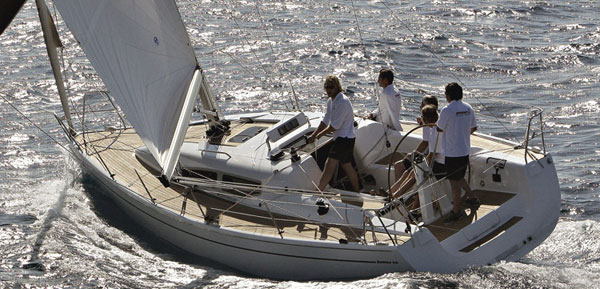
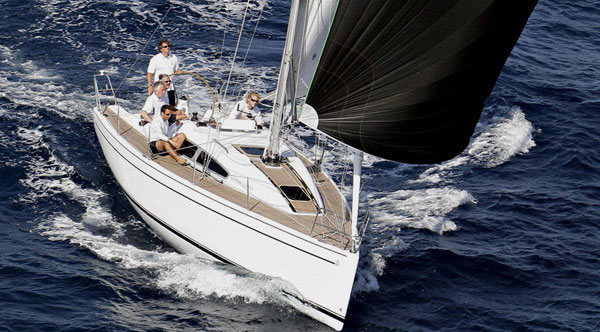
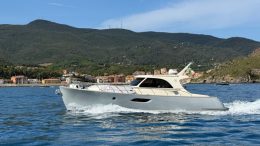
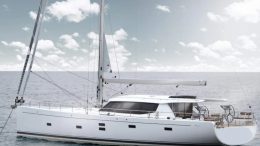
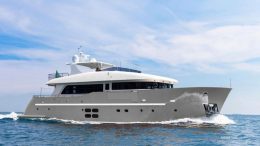
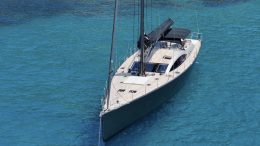
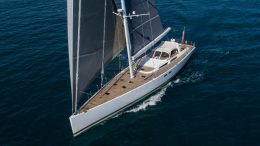
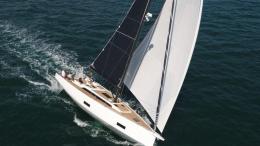
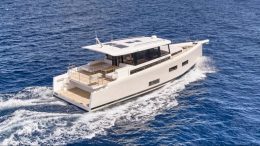
Follow us on: